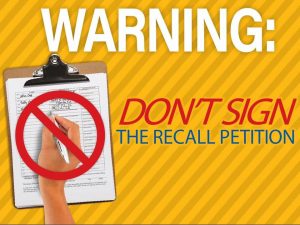How does it happen? Read here:
Overview
Recall is a procedure that allows citizens to remove and replace a public official before the end of a term of office. Historically, recall has been used most frequently at the local level. By some estimates, three-fourths of recall elections are at the city council or school board level. This brief, however, focuses on the recall only as it applies to state officials.
Recall differs from another method for removing officials from office–impeachment–in that it is a political device while impeachment is a legal process. Impeachment requires the House to bring specific charges, and the Senate to act as a jury. In most of the 19 recall states, specific grounds are not required, and the recall of a state official is held by an election.
Nineteen states plus the District of Columbia permit the recall of state officials:
Source: National Conference of State Legislatures
Virginia has a process that is similar to a recall, but it is not listed here as a recall state because its process, while requiring citizen petitions, calls for a recall trial rather than an election. In Virginia, after sufficient petition signatures are gathered and verified, a circuit court decides whether a Virginia official will be removed from office. In the recall states, the voters decide through an election.
Recall of Local Officials
In at least 29 states (some sources place this number at 36), recall elections may be held in local jurisdictions.
Read more here:
https://en.wikipedia.org/wiki/California_gubernatorial_recall_election


